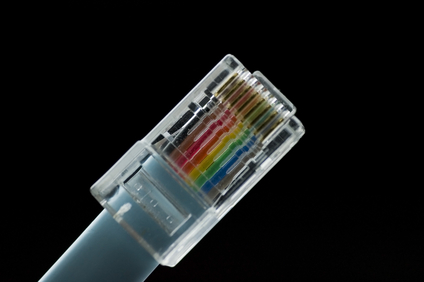
Basics of Riser Cables
 Riser cables were designed for non-plenum vertical applications like between the floors of multi-story buildings. They are also described as backbone cables. These cables serve as the main conduit of a distribution system for data, video or voice. It originates from the point where communications go in through a particular edifice. This cable comprises part of the structure backbone. Other components of this facility are the cable corridors, telecommunications cabinets, equipment rooms, correlated hardware, and support facilities. This cable variety must be fire resistant in accordance with electrical codes. Nonetheless, specifications are not as stringent compared to plenum cables.
Riser cables were designed for non-plenum vertical applications like between the floors of multi-story buildings. They are also described as backbone cables. These cables serve as the main conduit of a distribution system for data, video or voice. It originates from the point where communications go in through a particular edifice. This cable comprises part of the structure backbone. Other components of this facility are the cable corridors, telecommunications cabinets, equipment rooms, correlated hardware, and support facilities. This cable variety must be fire resistant in accordance with electrical codes. Nonetheless, specifications are not as stringent compared to plenum cables.
Understand its Uses
Riser cables may be used for different forms of data communications which also includes CCTV video access. It is ideal as well for voice communications. One major concern is that requirements vary for each service. Hat is why planning can sometimes be quite complicated. Building managers are often pressed to predict their requirements given limited time and expertise. Quite often they will recommend creating split riser systems for multiple applications which follow parallel routes through the corridors, closets, and equipment areas.
How do you select the medium?
Perhaps, the primary concern is to stay within budget. You can expect system designers to resort to trade-offs in delivering a broad assortment of services within the backbone system. Other factors that may influence their design are the following:
- Provide an adaptable medium in relation to supported services
- Identify the necessary useful life span of backbone cabling
- Consider the technical needs of users
Standards are on hand to serve as a guide in the design of riser cable systems. There are appropriate benchmarks for optical and copper cable backbone structures. Some of the backbone cable categories include:
- Copper-shielded and unshielded twisted-pair or UTP cables
- Coaxial and twin axial cabling configurations
- Single mode and micron multimode optical fibers
Physical locations supporting riser cables take into consideration the telecommunications service entrances and adjacent equipment rooms containing the main cross-connect. This can extend to the telecommunications closets that serve a particular location, intermediate cross-connects that serve a number of telecommunications closets, or horizontal cross-connects for a remote telecommunications closet or just one level of the building. The telecommunications cabinet is the point of interaction between backbone systems and parallel (same floor) wiring.
Riser cable systems in multiple-story buildings need to pass through equivalent closets making use of connecting conduits between the floors. Said design provides each floor access to the backbone and allows circuits to be distributed to all levels. The conduit and sleeves should go higher than the floor level by at least an inch and fitted with fire-stopping material. These should also adhere to electrical codes. The riser or backbone cable system essentially acts as the core of telecommunications infrastructure.

Benefits of Copper Cabling Solutions
 The conventional process of copper cabling has been used for several years and is still preferred by many network cable providers and end-users. Companies like Progressive Office Cabling offer a complete range of cabling solutions in Cat5, Cat5e, Cat6a and Cat6, providing clients with high-quality cable as well as connectivity components. Progressive Office Cabling makes use of highly effective cable management systems and well-trained technicians for installation jobs. It also employs a web-based online project management system to guarantee proper implementation and monitoring of any project.
The conventional process of copper cabling has been used for several years and is still preferred by many network cable providers and end-users. Companies like Progressive Office Cabling offer a complete range of cabling solutions in Cat5, Cat5e, Cat6a and Cat6, providing clients with high-quality cable as well as connectivity components. Progressive Office Cabling makes use of highly effective cable management systems and well-trained technicians for installation jobs. It also employs a web-based online project management system to guarantee proper implementation and monitoring of any project.
How Does Copper Cabling Work?
Installation technicians have to follow specific policies and standards, particularly when it comes to building structure concerns. There are several steps to follow with regard to installation. First, the cable should have the appropriate covering or insulation, which is normally made of PVC, Plenum, Ultra-Violet, or mold-resistant varieties. The cable is cut according to the needed length, and outer covers are removed before connectors are attached. Use the appropriate stripping tools for this purpose. Cables should be mounted as orderly as possible.
There are instances when installers have to use ladder trays and J-hooks, which are made for network cabling, or shoot nails into concrete ceilings using a tool that literally propels nails like bullets into the concrete surfaces. Network cables must be installed away from electric power lines, fluorescent lamps and industrial machines; the risk of electrical coupling can increase dependent on proximity and voltage factors.
Different Benefits
Copper cabling has multiple benefits and is the most effective conductor out there. Copper cables are flexible, which is especially advantageous if you are using electrical wires. It is necessary to bend the wire during installation, so you need something durable that will not easily break after a lot of twisting. Copper does not easily melt, so even if a sudden surge of current or overload takes place, there is no risk of burning or melting. At the same time, copper is not difficult to work on. The majority of electricians opt for copper wires because they can be stripped easily or pulled through rigid spots.
With regard to structured copper cabling, there is the Power over Ethernet benefit. This means that it is possible to run power through devices such as Wireless Access Points, surveillance cameras, and power phones. There is an emergency power supply that continues to power mission-critical devices even if electrical power conks out. Copper cabling supports modern technologies and facilitates the convergence of different applications. Hence, it is important that copper cabling is optimized for your requirements. That is why you should make sure to get the services only of experienced and trustworthy providers in the industry. Choose the provider that ensures customer satisfaction and warranty after installation.

Abandoned Cable Liability Issue

As tenants come and go in a commercial building, the cabling infrastructure sometimes leaves behind abandoned Cat5, Cat6 and coax cabling. All that needs to happen is for the new tenant to request a reconfigured layout that relocates the main wall closet. Or, sometimes the old tenant will cut away the cabling in order to take the patch panels with them. If possible, keep the wall closet location. And always offer to buy the patch panels from a departing tenant.

Immediate and Long Terms Savings of Upgrading to VOIP
 You may be experiencing plenty of success with your current business phone system but when you analyze the available information you may realize and even greater opportunity by switching to VOIP phone service. Upgrading your current land line phones to VOIP will provide you with an immediate and noticeable savings on your operating expenses and those savings will continue and grow moving forward.Upgrading
You may be experiencing plenty of success with your current business phone system but when you analyze the available information you may realize and even greater opportunity by switching to VOIP phone service. Upgrading your current land line phones to VOIP will provide you with an immediate and noticeable savings on your operating expenses and those savings will continue and grow moving forward.Upgrading
With voice over internet protocol you’ll be able to realize immediate savings on your expenses by
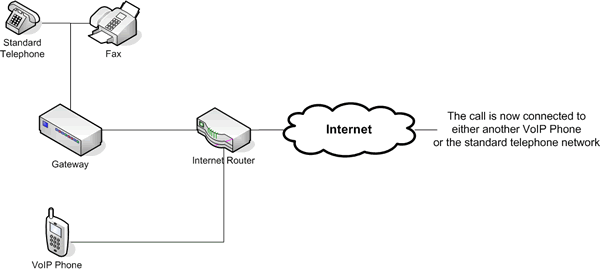
Simplicity Reigns Supreme with VOIP
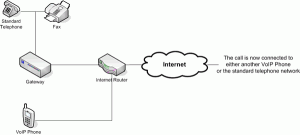 We’ve talked a bit about just how much upgrading your current business phone system to a VOIP phone system can save you in terms of space and complexity of equipment. With voice over internet protocol there is no need for a large closet full of expensive equipment that requires maintenance or that needs expensive additions if you want to upgrade. Small businesses are always looking for ways to simplify procedures and to trim operational costs that won’t interfere with the quality of service that they provide to their customer .
We’ve talked a bit about just how much upgrading your current business phone system to a VOIP phone system can save you in terms of space and complexity of equipment. With voice over internet protocol there is no need for a large closet full of expensive equipment that requires maintenance or that needs expensive additions if you want to upgrade. Small businesses are always looking for ways to simplify procedures and to trim operational costs that won’t interfere with the quality of service that they provide to their customer .

Windows 7 Was Not My Idea
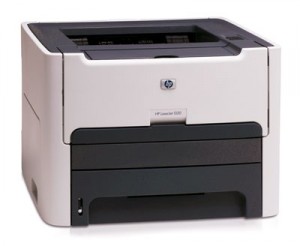 So, I bought a new Acer Aspire One Netbook for my wife and for home use. It is a terrific little machine. It comes with Windows 7, 1gb RAM, a 160gb hard drive, 3 USB ports, external video jack, 10" LCD screen, 100mb ethernet, WiFi, cam and a microphone for only $325. And it weighs just over 2 pounds.
So, I bought a new Acer Aspire One Netbook for my wife and for home use. It is a terrific little machine. It comes with Windows 7, 1gb RAM, a 160gb hard drive, 3 USB ports, external video jack, 10" LCD screen, 100mb ethernet, WiFi, cam and a microphone for only $325. And it weighs just over 2 pounds.
But when I went to install my printer to the machine I ran into a problem. I have a HP LaserJet 1320TN at home. It has been a terrific printer. It has 2 trays and it prints on both sides of a page. It has never had a single problem. I think the printer is about 7 or 8 years old. So, I get out the CD that came with the printer and I copy it onto a thumb drive because the netbook does not have a CD drive. Then I try to install it but it just doesn't work. The printer software is too old.
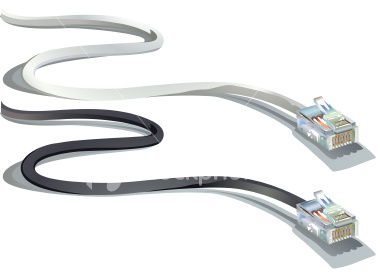
Choosing between Cat5e and Cat6 at your Office
Trends
The trend is towards higher speeds, of course. Offices have faster computers, faster Internet and more demanding applications. But does this translate into a need for Cat6 cable?
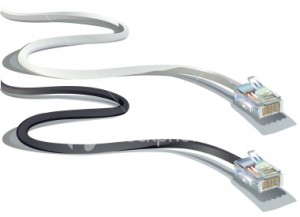 Category 5e and Cat6 Cable
Category 5e and Cat6 Cable
Cat 5e cable is an enhanced version of Cat 5 that adds specifications for far end crosstalk. Cat 5e cable does not enable longer cable distances for Ethernet networks: cables are still limited to a maximum of 100m (328 ft) in length. Each Cat 5e cable can carry up to 100mb/sec of data.
Cat 6 cable carries 1gb/sec of data and therefore has 10 times the data capacity of Cat 5e.
The Decision Considerations
Cat 6 will not make your Internet speeds faster. Even at fiber speeds, the Internet still only runs at a fraction of Cat 5 speeds. Cat 6 will also not make VOIP phones were better because VOIP uses only 60-90k per phone line. So, VOIP is a very unlikely reason for using Cat6 cabling
The only reason for using Cat 6 is because you are pushing a lot of data over your cable. This is true when you are running applications off of a server as in the case of a virtual PC environment where applications do not reside on the local desktop system. It is also true when you have applications that have very large data files as in CAD/CAM and other demanding graphic design systems.
A secondary, yet important, consideration is cost. Cat 6 cable is twice as expensive as Cat 5e and it also r
equires Cat 6 jacks, inserts, patch panels and switches. This can add considerably to the overall cost of a project. Any Cat 5 component will slow the connection down to 100mb.
Need more help? Click here to go to a page that will put you in touch with us. Answer all of the questions that you can and we will get back to you with a quote.

